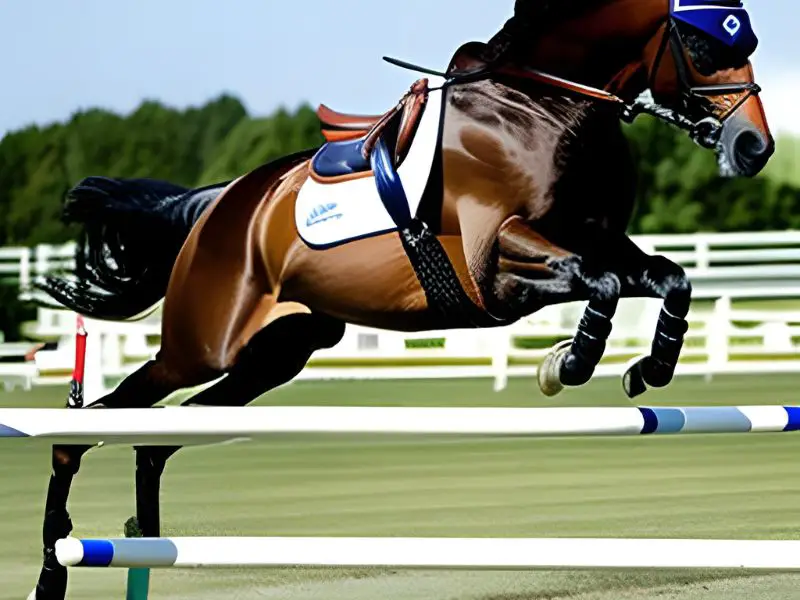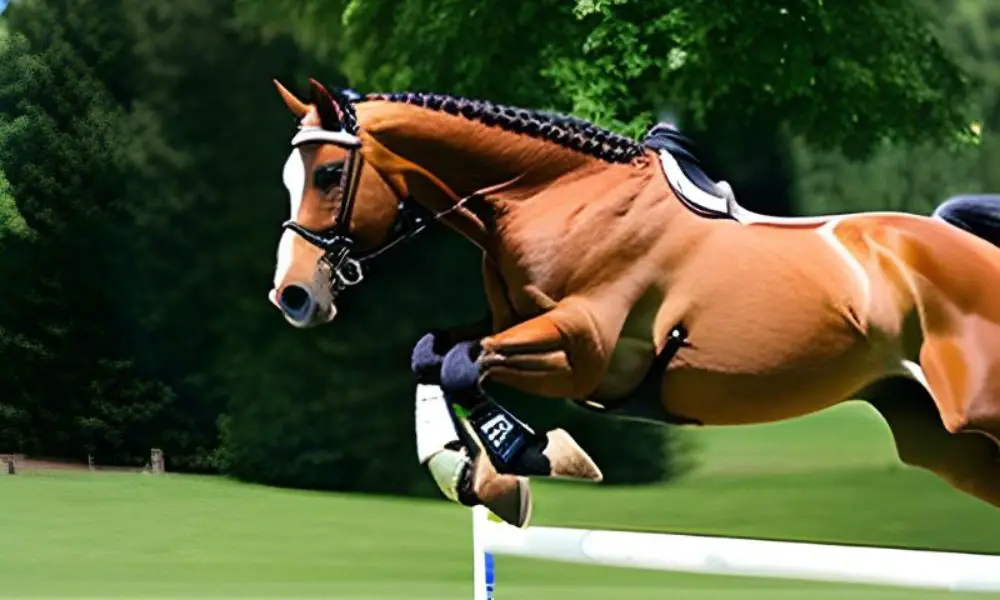Can a horse jump after a suspensory injury? Yes, a horse can jump after a suspensory injury. Horses that have had suspensory injuries typically need to undergo rehabilitation in order to help them recover and rebuild strength and range of motion in their legs. When the horse is ready for jumping, it should be re-evaluated by a vet or equine professional to ensure they are physically ready for the challenge.
Once given the go ahead, horses can usually return to light riding with jumps no higher than 18 inches (45 cm). As the horse continues its recovery, jumps may gradually increase as long as there is no pain or lameness associated with them.
Horses are incredible athletes, but they can be susceptible to injuries. One of the most common types of horse injuries is a suspensory injury. While these injuries can require weeks or months of rest and rehabilitation before the horse is ready to return to work, it is possible for them to eventually jump again after an injury like this.
However, care must be taken not to push the horse too hard during recovery in order for him or her to make a full recovery without further damage being done.
Should I Buy a Horse With a Suspensory Ligament Injury
If you are considering purchasing a horse with a suspensory ligament injury, it is important to understand the risks and potential for rehabilitation. Suspensory ligament injuries can be complex and may require surgery or other treatments, such as icing, rest, stretching exercises and anti-inflammatory medications. While some horses may recover fully from this type of injury, others may experience chronic pain or have limited performance capabilities.
Additionally, these types of injuries can be expensive to treat so it is important to factor in the costs associated with veterinary care into your budget before purchasing a horse with this condition.

How Long Does It Take for a Suspensory Ligament to Heal in a Horse?
The healing time for a suspensory ligament injury in a horse depends on the severity of the injury and how it is treated. Minor injuries may take two to three weeks to heal, while more severe tears may require up to six months, or longer, depending on how well they are managed. It is important that a veterinarian be consulted as soon as possible after an injury occurs so that appropriate treatment can begin.
Treatment usually includes anti-inflammatory drugs, rest and supportive bandaging until the horse can bear weight again. In some cases surgery might be required if there are significant tears in the ligaments which cannot repair themselves naturally. During recovery from any type of suspensory ligament injury, it is essential that regular check-ups with a vet occur to monitor progress and ensure proper healing has taken place before beginning exercise again too soon could cause further damage.
What is the Prognosis for Suspensory Ligament Injury in Horses?
The prognosis for suspensory ligament injury in horses is generally good, however it does depend on the severity of the injury. The most common type of suspensory ligament injury is a strain or tear that can range from mild to severe. Milder strains will often heal without treatment and may only require rest and icing to reduce inflammation.
More severe injuries may need further intervention such as shockwave therapy, surgery or stem cell therapy. Long-term prognosis depends largely on the amount of damage done to the ligaments and how well they heal, but with proper care and rehabilitation, many horses make full recoveries after being treated for this kind of injury. Regardless of the outcome though, it’s important to seek professional advice right away if you suspect your horse has suffered a suspensory ligament injury so that an accurate diagnosis can be made and appropriate steps taken towards recovery.
How Do You Rehab a Suspensory Ligament Injury?
Rehabbing a suspensory ligament injury is an important part of the recovery process. The primary goal of rehab is to restore normal range of motion, strength and function in the affected area. To do this, your physical therapist may recommend a combination of stretching exercises, therapeutic exercise and bracing or taping techniques.
Stretching exercises help lengthen tight muscles that can pull on the injured ligament. Therapeutic exercise strengthens weakened muscles around the joint and helps prevent further injury. Bracing or taping techniques can provide additional support to protect against reinjury during activity or rehabilitation sessions.
Your physical therapist will also likely recommend icing after any type of activity to reduce inflammation and swelling in the area as well as providing instruction on proper warm-up before activities such as riding, running or jumping to reduce stress on your joints and ligaments. Additionally, they may suggest specific strengthening exercises for your legs including single leg squats with balance boards/discs which are designed to improve proprioception (the body’s awareness) while building strength in core muscle groups supporting your joints. If followed diligently, these strategies should help you return safely from an injury so that you can get back out there doing what you love!
How Bad is a Suspensory Injury in Horses?
A suspensory injury in horses can be a debilitating and potentially career-ending situation. Suspensory ligaments are responsible for providing stability to the lower limb, acting as shock absorbers when the horse lands or moves. When these ligaments are strained or ruptured, it affects the horse’s ability to move and even stand properly due to pain and instability.
This type of injury is common among racehorses who often have sustained repetitive strain on their legs from running at high speeds on hard surfaces. The initial symptoms may include swelling, heat, tenderness, lameness, decreased range of motion in the affected leg and an inability to bear weight on that leg without pain which can worsen if not treated promptly with rest and rehabilitation exercises. Depending on how severe the damage is surgery may be necessary where a portion of the damaged ligament would need to be removed so that scar tissue could form allowing the animal return back into work after healing occurs but this procedure is costly and carries risks such as infection.
Ask the Vet – Suspensory ligament injuries
Conclusion
In conclusion, while a horse can jump after suffering a suspensory injury, it is important to take the necessary precautions and follow appropriate rehabilitation protocols in order to ensure that the horse returns to its previous level of performance without further complications. It is also essential for owners and trainers to be aware of any signs or symptoms that may indicate an impending problem before allowing the horse back into full competition. With proper care, horses with suspensory injuries can heal successfully and return to their former glory as athletes on the field or track.
Janet G Kulick is an experienced horse rider, trainer, and owner of the informative horse blog, Horseray.com. Her engaging writing style and wealth of knowledge on horse care, riding, and training make her a trusted source for horse enthusiasts worldwide.






